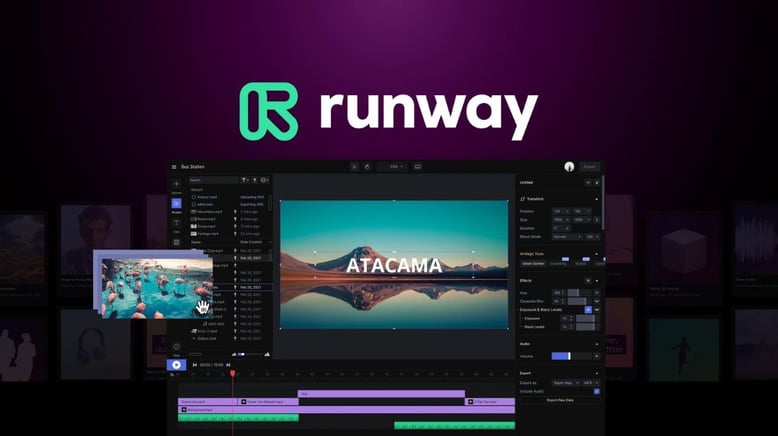While AI technology is in its early stages, and debates are raging over the ethics and long-term efficacy of different AI-powered tools, the capabilities of these platforms are already astonishing. When it takes a machine seconds to do something that would take a member of your team hours or even days, it’s no surprise that AI is making waves across our industry.
Whatever your opinion, there’s no burying your head in the sand. From established paid media platforms that have incorporated AI into their targeting and optimization, to generative AI that churns out SEO-friendly content, to a suite of social media-friendly tools, these technologies are already turning tried-and-true marketing processes upside down.
As a digital marketer, your challenge is clear. How can you experiment, iterate, and evolve with these new possibilities? And how can these tools support your team’s expertise to deliver better results than ever?
As always, the Major Tom team has a few ideas.
Get a head start on top-notch content
Let’s start with the big one. When you think of headline-grabbing AI, Chat GPT is probably one of the first that comes to mind.
Everyone has been talking about this talkative AI tool, but it’s actually one of a growing suite of similar solutions like Jasper, the new GrammarlyGO, and (the still limited-access) Google Bard.

What do all of these tools have in common? They’re a specific category of generative AI (or AI that receives input and produces something new - or at least new-ish) known as “Large Language Models”. They’re all geared towards one thing: producing words, and lots of them.
As communications pros, it’s not hard to see the possibilities. Who wouldn’t want to produce a press release in seconds with a click? Provide a short brief and have a full blog post dropped in your lap? What if you could get a ready-made (and keyword-loaded) product description to boost you to the top of a customer’s search results?
They’re all part of these AI language models’ big claims, and it’s true — these tools can massively increase the efficiency of your content production. It only makes sense to take advantage. But there are, of course, complications to watch out for.
Avoiding the pitfalls to use AI language models the right way
Left to their own devices, AI-powered language models still leave a lot to be desired. While the thought of providing a whole content calendar at a click is certainly appealing, these technologies still need some refinement and guidance.
What does that mean for you?
Don’t
-
Don't underestimate the importance of human creativity and originality in content creation. Your audience can sense the difference between AI-generated content and the authentic voice of a human writer. While AI may offer efficiency, it lacks the ability to bring a unique perspective or a captivating storytelling element to your content. To stand out from competitors, embrace thought leadership and incorporate your distinct voice and tone. Share internal research, case studies, and explore new angles on popular topics to engage your audience and avoid producing blog posts that sound like everyone else's. Remember, AI should complement human expertise, not replace it, especially when it comes to the art of storytelling.
-
Don’t rely on AI language models for the final edit of public-facing work — especially long-form content. While most of these platforms are user-friendly enough, the content they produce can be clunky and formulaic. They’re also not immune to errors in spelling and grammar, which can make your work seem unpolished if it goes out without a review. At the very least, have a team member ready to take a quick pass on anything you generate through ChatGPT and its peers.
Do
- Do take advantage of the short-form templates in platforms like Jasper. These formats, like Facebook headlines, email subject lines, video or product descriptions, and even SEO meta titles, tend to need less revision — and rely less on AI’s hit-or-miss editorial instincts.
- Do use your platform of choice to get the ball rolling on new content. Have writer’s block at the brainstorming stage? Get a list of topics from ChatGPT, or have Jarvis deliver a first draft of your next piece of content — but be prepared to revise and edit until the results meet your expected level of polish. You can even request SEO-friendly topic titles or subjects to give you a headstart on your search engine placement.
Or think of these platforms as research assistants, and have them deliver extra information to help you better understand a new topic. Just be sure to check their sources and keep an eye out for any errors. After all, these platforms are still prone to providing questionable information alongside accurate results.
The good news? The work of editing AI outputs will focus your content and refine your knowledge, all while adding that elusive human touch for readers to connect to. Plus, it’ll still tend to take less time than you’d need to draft and research from scratch.
That’s an invaluable head start for the initial “heavy lifting” phase, creating better/faster outlines and providing a base to edit and build on. Goodbye, writer’s block!
Get easy inspiration - and a brainstorming partner - for your killer creative
What about the visual assets for your next campaign? Or design inspiration for a new website build? Good news: image generators are another rapidly developing subset of generative AI — and used correctly, they can help accelerate your creative work, as well.
Think of image generators like Runway, Stable Diffusion, and Midjourney. Even big names are getting in on the action, like Adobe’s growing suite of AI tools.
These programs can generate fresh art in moments - with certain limitations.
Think of Midjourney, which will typically excel at abstract or surreal images. Perfect for concept art to sell a client on a new campaign, or to add flavor to a presentation, but not necessarily a great replacement for stock or lifestyle images. After all, you don’t want a potential customer to be distracted from a purchase if, say, some uncanny hands sneak onto a product page.
This is where the judgment of your designers and creative team comes into play. Having a talented human designer to polish, recreate, refine, and place AI-generated artwork is crucial to ensuring it has the right kind of impact on your projects.
Image and video generation to support — rather than replace — your team’s specialties
Better yet, AI platforms like Runway can help augment your creative team’s capabilities with an intuitive interface and 31 starter tools that can help streamline and speed up image and video creation.
Does your team specialize in images but have limited video experience? Or maybe they’re talented with both, but your project budget is running out and your deadline is looming. Using these tools can help them push their limits and create new types of work, or create more quickly and efficiently than they might otherwise. That can be the difference between meeting your budget or overinvesting in a new campaign.

Of course, that’s not all. We can even learn about User Experience and design from the development of these AI platforms — which are useful as case studies, as well as tools.
Improve your paid media efficiency without changing your platform
For the paid media experts, good news: you’re probably already using AI capabilities to optimize your projects.
With the rise of programmatic advertising, most of your paid media buys already leverage some degree of AI optimization. This is especially true on major ad platforms like Google and Meta, where some degree of automatic bidding and machine learning support is the default, rather than something you have to seek out on your own.
How you can take advantage of those automations is a whole separate discussion (really, more than one). Still, it’s worth noting that paid media providers are hard at work to upgrade their AI automation and analytics — like Google’s conversion-focused Performance Max campaigns and their long-awaited transition to GA4.
An experienced paid media partner can help you navigate the changing landscape and ensure your campaigns don’t fall out of date. Plus, killer creative will always give the algorithm more to work with when it comes to promoting your campaigns.
Add extra punch to your social media content strategy
What about the social media managers and content creators of the world?
While the language and image generation AI discussed above is certainly still useful for building a savvy social media strategy, there are other opportunities to leverage AI tools for making a more efficient impact on your audience.
Take Play.ht, which can help you fill a big gap in any social media strategy: someone to put in front of the camera (or microphone). Let’s face it, not everyone is comfortable speaking in or over videos — and the budget to hire an outside actor or influencer for your social media projects can be steep. In some cases, you may not want to appear as the spokesperson for your company or your clients.
But you can’t just ignore video — especially in an era where Meta’s algorithm favors original video and audio content. Not to mention the variety they add to any well-rounded editorial calendar.
So how can AI tools like Play.ht help?
This platform’s text-to-voice generator allows you to type whatever script you have in mind for a post and will generate a natural-sounding synthetic voice to narrate that text. That includes options for customization and provides a final audio file in easy-to-export mp3 format.
Play.ht in particular has been praised for its high-quality audio output, natural-sounding voices, user-friendly interface, useful customization options, and affordable pricing plans.
All of that means an affordable option to catch the algorithm’s attention with your posts — which, paired with strategic boosting and a quality content plan, will help your clients gain the exposure they need on the most relevant social channels.
Bring both AI efficiency — and your team’s expertise — to bear
Wherever you focus your AI experimentation, remember: “The output is only as good as the input”.
These tools can absolutely help you streamline your processes, regardless of your digital marketing specialty. But what you get out of AI experimentation will only be as good as what you put in. It will take the right mix of AI efficiency and your team’s expertise to deliver quality results.
Most importantly, remember that AI technology is still changing, and fast. While it’s tempting to stay set in our ways (after all, we’re supposed to be the experts), tomorrow’s digital marketing leaders will be those who have figured out the best way to wrangle their AI support.
Doing so won’t just save time and make you look good to your clients — it will also free you up to focus on strategic thinking and big-picture wins. As the saying goes, AI won’t replace human professionals. But the people who use it might just replace the people who don’t.
Want to keep up with the latest developments? Subscribe to the Mercury blog — and happy experimenting!